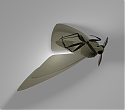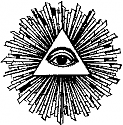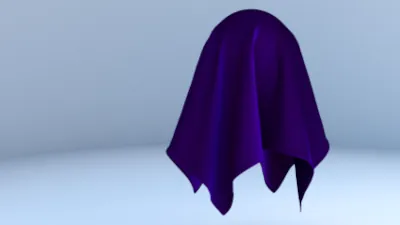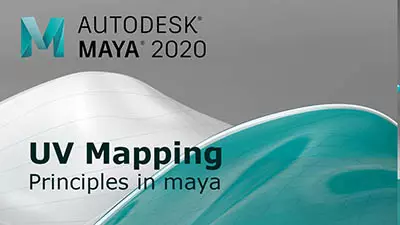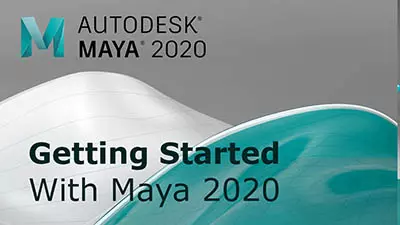Can stereoscopic camera be used to make a video seen through the eyes of a human?
For example, if 2 cameras look at 2 cubes and one cube is behind the front one, the front cube will look normal but the back cube will be doubled and whatever parts of it don't intersect will be semi-transparent.
Is there any way to do this without having to manually overlay pictures / videos seen through each of the 2 cameras?
Join Date: Dec 2005
I am not referring to using a technology outside of the computer to see what the character is seeing.Hmm, yes, but it's a bit confusing what you're asking. It all depends on what tech you will use to view the stereoscopy, whether it's crossed-eyes, red-cyan glasses, polarized light, active shutters etc. I don't think any of them use the semi-transparent method that you're referring to, which is what I'm confused about.
I want to make it look as if a human is looking at the objects (video will display the world as HE sees it). So I do not mean I want to make the video be made for 3D glasses or stuff like that.
I want a point-of-view of a human, thus the aspect of the image will be fixed (if the human is looking at a cube that's in front of him, and there is a 2nd cube behind that cube, he will see the cube in the back doubled/with transparency effect on the sides that do not intersect).
I will make a picture that will imitate human vision to show you what I mean.
EDIT: In this picture you can see what I mean. That doubling of the image effect that we see when we look at a closer / distant object.
Look at your finger but also observe the background while not changing focus from the finger. You will notice that everything further from your finger is doubled.
Last edited by SilverFeather; 11-01-2012 at 10:09 PM.
Join Date: Dec 2005
The added problem with this is that you cannot look at anything but the object you are supposed to (a small problem with focus in movies in general). Once tech gets to the point where you can change the focus based on where you look, this may be more relevant.
Imagination is more important than knowledge.
Never been / I am allergic to alcohol. Cross-eyed view is a normal thing, humans just don't observe it most of the time when focusing on a near object (unless you only have one eye).are you drunk?
Yeah, the finger being close to your eyes and you focusing on it, makes you see the background doubled. If you know how to control your attention, you can observe the background without moving the attention from your finger.Haha, Dom. I see what you mean SilverFeather now, but it's only really noticeable when you're focusing close up, or if the thing out of focus is close up to your eye.
The added problem with this is that you cannot look at anything but the object you are supposed to (a small problem with focus in movies in general). Once tech gets to the point where you can change the focus based on where you look, this may be more relevant.
Well, I want to make two cameras focus on one object and see it through both cameras' view. Thus the views must be overlaid to result in a single image exactly as the two cameras see it. Not in red/cyan like the normal stereoscopic camera sees it, but in true color.
I can even simulate a 3-eyed vision if I put all three rendered images over each other and apply 90% transparency. Could also do a 4 5 and 6 eyed-view, but at that point the object of focus appears to be extremely strange.
From wikipedia, it shows how owl's eye works in seeing objects (light blue will be the transparent area it sees from the vision field).
https://upload.wikimedia.org/wikipedi...on-owl.svg.png
Pigeon on the other hand sees in both sides, I bet it would be confusing to do a simulation of that one.
Last edited by SilverFeather; 12-01-2012 at 01:30 PM.
Using multiple camera's would defeat your purpose though, as I think you want to simulate what a person sees. We only have two eyes

Imagination is more important than knowledge.
Not exact effect, as you see blue and cyan. This will be used for a very short scene, just to show what object /scenery the character is focusing on while not requiring anyone to use 3D glasses just for that little scene.Sorry, but why would you want such a technique? If you watch normal stereo movies in the theater, without glasses, you get this exact effect; it is very disorienting and visually unpleasant. This ghosting is something that we always want to reduce, as it's what make your eyes fatigue when watching a stereo film.
Using multiple camera's would defeat your purpose though, as I think you want to simulate what a person sees. We only have two eyes
And yes we have two eyes, thus two cameras would act as those 2 eyes if placed at the exact distance as the eyes of a character and given mobility to focus on an object or distant scenery. The only problem is that I cannot make those two cameras get cross-eyed vision unless I apply the resulting images one over the other in Corel for example and use transparency.
When overlaid, the intersecting areas of objects that the cameras are focused on will seem opaque while the non-intersecting will appear transparent / doubled.
Last edited by SilverFeather; 12-01-2012 at 07:16 PM.
Imagination is more important than knowledge.
It seems that if I use two cameras created as "Camera and Aim", they work exactly like eyes, but this still requires rendering in turns. It doesn't render the image directly, which is what I wish I could do. To auto-render a cross-view of two separate images from both cameras.So, you're going to have to render in passes. A foreground pass, and a background pass. Then composite them.
So far, the stereo cameras just give me the red/cyan style and no option to set it to real color.
There is an option to split channels as two images, but that doesn't help, as I want to merge them directly, not in an outside program.
So basically I am trying to simulate this: https://en.wikipedia.org/wiki/Convergence_(eye) within Maya, but there seems to be no option for it, looks like I'll have to overlay the images from two cameras one by one in Corel.
Last edited by SilverFeather; 12-01-2012 at 08:42 PM.
Imagination is more important than knowledge.
So you are saying I should use a stereo camera set and then render the frames on Left camera first and then render on Right camera and then merge the images in corel?There is no way to do it. You MUST composite them. Use a stereo camera rig as well, not two normal cameras.
Hmm, good idea, that way I can control the focus without having to move the aim of the cameras. Thanks for the idea. At least that will make it easier to composite the images (although it will double the rendering times, good thing it will be probably 600-900 frames at most for this scene when I will be working on it).
Well, that can be added to the list of things that have to be done for the project.
For some reason, I can't seem to record the Toe In Adjust to the frames. Is there any way to do this?
Also, Camera Zoom cannot be recorded either. Why not?
I've noticed pretty much everything such as color change cannot be recorded to keyframes. There's got to be something I'm missing...
Last edited by SilverFeather; 12-01-2012 at 10:58 PM.
Imagination is more important than knowledge.
But how do I make batch render remember which eye I want to export first? I never exported an image sequence out of a stereo camera.Actually, it doesn't double the render time. Since the geometry is still in memory from the first eye; the second eye doesn't have to translate the scene again.
Main reason I couldn't do that is because I cannot trigger/toggle any of its settings on keyframes. I found something in the graph editor that might help, but there seems to be no option of applying that attribute to the camera even though it SHOULD have it (such as focus and toe in adjustment).
